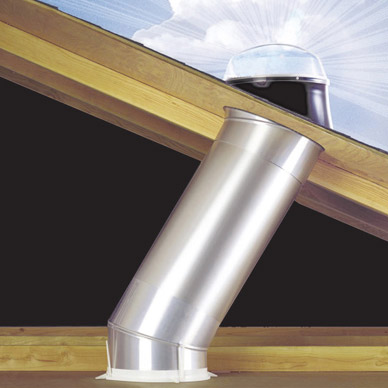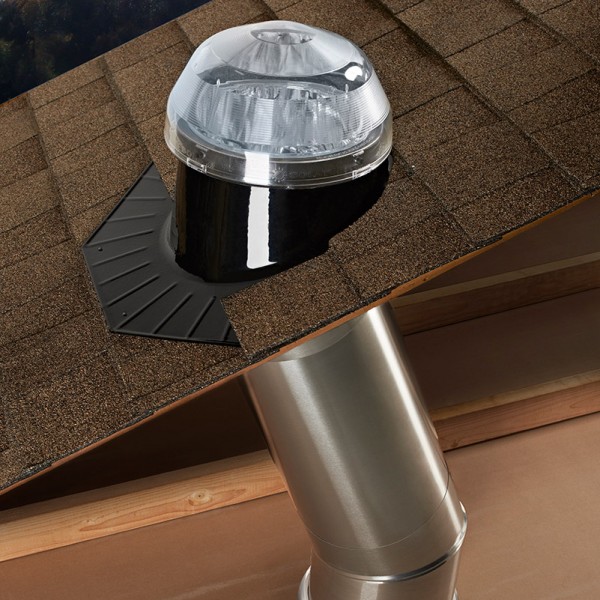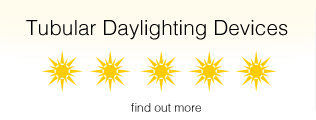Solatube costs Central Coast
Tubular Skylight Technology has changed very rapidly in the last 20 years. There are so many products on the market each making various claim; but how does the consumer find what is right for their home and how do they understand the differences between all the different products.
The Industry Standards of Tubular Skylights for domestic homes usually consist of two main sizes 250-300 and 400-500 diameter. Larger sizes are usually for commercial building use, as to fit these large sizes into a residential home, the roof structure will often need to be altered.
All traditional skylights are developed with four main components that should be assessed when deciding what product you should purchase.
- The Dome used for capturing light and protection from the elements. These days all include UV inhibitors that will stop fading any items within your home
- The roof fixing component also know as a Flashing
- Tube to connect the Dome to your ceiling
- Ceiling fixture also known as the Diffuser
Solatube Econotube
Flex Tube
This is the most economic priced product on the market ranging from $100 – $400 plus installation, depending on the diameter. These can be purchased though most hardware stores and all skylight manufactures.
It has a standard Dome, Flashing and Tubing that is similar to air-conditioning duct and a Diffuser.
The light performance from these tubes is often poor if not installed in an ideal condition. It is usually purchased in the Building Industry to maximise margins. Larger sizes are often installed to overcome the poor light performance, but at the cost of introducing more heat into the space. Using flexible ducting may help with installation, but is not as durable as other skylights on the market.

If price is your main consideration, this is a satisfactory product if you look for the following:
The ideal installation for this product is on the north side of your roof with LESS then a one Metre distance between the roofline and your ceiling.
Ensure the roof flashing is not “one size fits all”, this can increase installation cost and make it very difficult to water proof on any metal roof.
Solatube Heavenly Intelligent
Ridged Tube
This is a highly priced competitive market through Skylight Manufacturers and while price will change depending on the distance between your roofline and ceiling, the average product price for standard roof (1.2m), a 250 diameter sells for about $400 – $600 up to $850 for larger sizes.
The dome may or may not use Light Enhancing Technology, Flashings are usually specific to the roof type and the Tubing is solid durable aluminium with reflectivity ranging from 95 – 98%.
The product may or may not use a lens to achieve Energy Rating.

Solatube Brighten Up
Daylighting Devices
This is where a few Skylight Manufacturers compete to develop the best product with the latest Technology advancements in daylighting systems.
Again, the price of these products will vary depending on the distance between your roofline and ceiling but for an average 1.2 metre drop, the 250/300 diameter sells for about $700 – $1000 and up to $1300 for larger sizes.
The skylight domes are designed to capture low angle, early morning and late afternoon (and all of winter) sunlight, when light is required most in the customer’s home. They also reject overpowering summer sunlight to keep your home cooler during the day.

The Roof Flashings are always specifically tailored to your roof type to make them leak proof and multiple layers of lenses are used to ensure energy efficiency.
The Tubing is solid aluminium with reflectivity ranging from 98 – 99.7% allowing light to travel much further than regular tubes. Some amazing installations have been completed with a tube traveling up to 10 metres, including a few 90 degree bends and still providing more light than a standard Flexi Tube Skylight with the same diameter.
These Products also offer a full range of diffusers to suit the decor of your home and utilise many different configurations to provide the best spread of light in your room.
A new trend in Diffusers is to move away from the glare or “hot spots” that are generally created by a standard Diffuser. To reduce these “hot spots”, the manufacture must reflect light from the skylight back on the ceiling. This can be achieved though glass or any other product sitting just below the diffuser and extending out past the light delivered from the tube.



